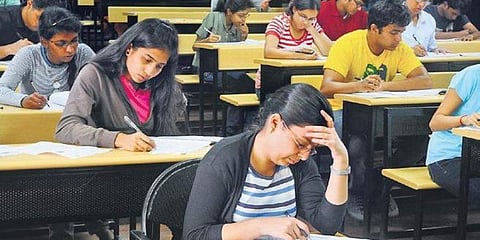

The number of dropouts from 2016 to 2020 in the IITs, NITs, IISERs among other Centrally Funded Technical Institutions (CFTIs) belonging to the reserved communities is over 60 per cent, according to a report. Even though the number of admissions in CFTIs have increased over the years and dropouts, in absolute numbers, have been dwindling, the IITs, NITs and IISERs lead the bunch when it comes to seat loss, found an analysis by the Students' Federation of India (SFI). "Around 63 per cent of the undergraduate dropouts at the top seven IITs belongs to the reserved category, of which almost 40 per cent are from the SC and ST communities. SC and ST groups together formed 50 per cent, 40 per cent and 30 per cent of the dropouts at NIT Uttarakhand, Warangal and Calicut. Similar trends were observed at IISc, IISERs and IIITs," said the report.
Student organisations and educationists across the country have been discussing the issue of students dropping out of undergraduate courses from eminent institutions — a majority of them hailing from the marginalised sections of society. The data released by the Ministry of Education in response to a couple of questions raised in the Rajya Sabha, when compared to the total number of seats, show that at least 683 SC seats, 831 ST seats and 591 OBC seats were not filled in the Centrally Funded Technical Institutions (CFTIs) from 2016 to 2020. A total of 619 SC, 365 ST and 847 OBC students dropped out during the same period.
The most recent question on the issue was raised by Rajya Sabha MP Dr V Sivadasan of the CPI(M) and was answered on August 5 by Education Minister Dharmendra Pradhan. Along with asking for the number of students enrolled and the number of dropouts, Dr Sivadasan also asked whether the dropout trends vary across "different social categories in the same institutions and if so, then the reasons behind this variance and measures taken recently to address it".
The answer was a generic one that did not really address the issue completely. "The dropouts or withdrawals are mainly on account of securing a seat in other departments or institutions of the student's choice or on any other personal ground. The government has taken various steps like fee reductions, institute scholarships, priority access to national-level scholarships to aid students with poor financial backgrounds to pursue their education," said the ministry. But this does not really answer if the dropout stats vary across strata or regions or provide the reason behind it.
The reasons for dropout might not be so simple. IITs and CEIs must have strong equal opportunities cells and SC, ST and OBC cells to regularly monitor the concerns are marginalised sections, said Kiran Kumar, National President, AIOBCSA. "Caste-based discrimination, financial problems, elitism, and the English language might be the major reasons for the dropouts. Institutions must be conducive and inclusive in helping marginalised students. There must be an action plan from the government and respective institutions," he added.
The SFI said that they will reiterate the demand to the Ministry of Education to ensure the proper enactment of the CEI (Reservation in Admission) Act of 2006 that mandates 15 per cent, 7.5 per cent and 27 per cent reservation to students belonging to SC, ST and OBC communities and also to set up special cells for the welfare of students from SC/ST/OBC groups.
